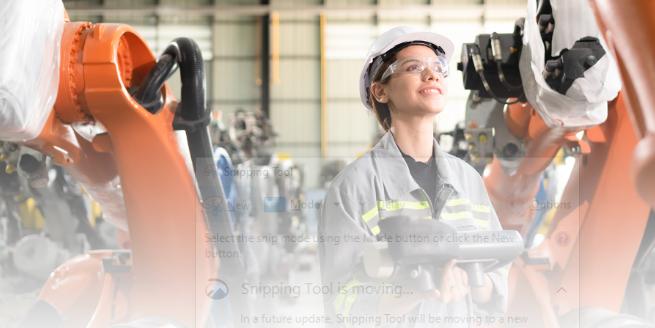Artificial Intelligence (AI) has revolutionized the way we interact with technology, from voice assistants to self-driving cars. But behind every intelligent system lies a robust framework built by software engineers. These professionals play a pivotal role in shaping AI algorithms, ensuring they are scalable, efficient, and aligned with real-world demands.
This article explores the essential contribution of software engineering to the development of AI algorithms and why it serves as the critical bridge between theoretical models and practical applications.
Understanding the Link Between AI and Software Engineering
AI development isn’t just about data and models—it’s about translating complex theories into working products. Software engineering provides the tools, techniques, and best practices to make that happen.
At its core, software engineering in AI involves:
- Designing efficient architectures for AI systems
- Managing large-scale data pipelines
- Ensuring code quality, maintainability, and performance
- Testing and validating AI models under various conditions
- Enabling integration with external systems and user interfaces
Without proper software engineering, even the most promising AI models can become unreliable, unscalable, or difficult to deploy.
Architecting AI Systems for Scalability
AI models often require massive datasets, compute resources, and parallel processing. Software engineers are responsible for designing scalable system architectures that can support these requirements.
This includes:
- Microservices and APIs for modular design
- Cloud-native frameworks like Kubernetes, Docker, and AWS Sagemaker
- Distributed computing environments such as Apache Spark or Ray
- Load balancing and failover systems to ensure uptime
These architectural decisions are crucial for deploying AI at scale—whether it’s a real-time recommendation engine or an enterprise-wide fraud detection system.
Code Optimization and Performance Tuning
AI models are computationally intensive. A key role of software engineers is to optimize the underlying code and runtime environment to make algorithms faster and more resource-efficient.
Techniques used include:
- Profiling and identifying bottlenecks
- Parallelizing workloads
- Using low-level programming tools (e.g., CUDA for GPUs)
- Integrating optimized libraries like TensorFlow, PyTorch, ONNX, or OpenVINO
Performance tuning ensures AI models can be deployed in latency-sensitive environments, such as autonomous vehicles or financial trading platforms.
Building Robust AI Development Pipelines
Software engineering principles are vital in creating structured AI development workflows, often referred to as MLOps (Machine Learning Operations). These pipelines streamline:
- Data ingestion and preprocessing
- Model training and validation
- Continuous integration/continuous deployment (CI/CD)
- Model versioning and rollback
- Monitoring and logging
Tools like MLflow, DVC, Kubeflow, and Jenkins are used to automate and track each step. This systematic approach reduces errors, increases reproducibility, and speeds up time-to-market.
Ensuring Model Quality Through Testing and Validation
Just like traditional software, AI systems must be tested—only the complexity is even higher. Software engineers implement a variety of testing protocols to verify AI model performance:
- Unit testing for AI components
- Integration testing across data pipelines
- Stress testing under heavy workloads
- Bias and fairness testing for ethical AI
- A/B testing in production environments
By applying engineering rigor, they help mitigate risks associated with biased models, unexpected behavior, or system failures.
Security and Compliance in AI Development
AI systems often deal with sensitive data, making security a top priority. Software engineers play a vital role in:
- Securing APIs and endpoints
- Encrypting data at rest and in transit
- Implementing access controls and audit logs
- Ensuring compliance with regulations like GDPR, HIPAA, or ISO standards
These practices not only protect user data but also enhance trust in AI-driven solutions.
Collaboration Between AI Scientists and Engineers
The development of AI algorithms is a highly interdisciplinary process. Data scientists and machine learning engineers focus on the theoretical and mathematical aspects, while software engineers focus on productionization and operational stability.
Key areas of collaboration include:
- Translating prototype models into production-ready code
- Aligning business logic with AI model outputs
- Managing infrastructure and deployment workflows
- Facilitating agile development through DevOps principles
This partnership ensures that AI systems are both intelligent and reliable.
Real-World Examples of Software Engineering in AI Success
1. Autonomous Vehicles
Software engineers build the entire stack for autonomous cars—from sensor data integration to real-time decision-making engines—ensuring that AI algorithms operate safely under real-world conditions.
2. Fintech and Fraud Detection
AI algorithms for fraud detection rely on real-time transaction analysis. Engineers create low-latency systems capable of processing millions of transactions per second while maintaining accuracy and data integrity.
3. Healthcare Diagnostics
In medical imaging AI, engineers ensure models are explainable, traceable, and integrated with electronic health records. They also enforce compliance with medical regulations.
Challenges Software Engineers Face in AI Projects
- Handling rapidly evolving frameworks like TensorFlow or PyTorch
- Maintaining software modularity in the face of complex AI pipelines
- Debugging opaque “black box” models
- Ensuring hardware-software compatibility, especially in edge AI
- Scaling experimentation across multiple datasets, environments, and user scenarios
Overcoming these challenges requires continual learning, adaptability, and tight coordination with AI research teams.
The Future: Software Engineering as the AI Enabler
As AI systems become more advanced, the need for specialized AI software engineers is growing rapidly. These engineers will focus on:
- Neural network compilers
- AI-specific CI/CD workflows
- Intelligent DevOps (AIOps)
- Software-defined AI infrastructure
In the near future, AI tools will also assist engineers—through code generation, automated debugging, and predictive system design—creating a feedback loop of intelligence and innovation.
Conclusion: Engineering the Intelligence of Tomorrow
Software engineering is not just a support function—it’s the driving force that brings AI algorithms to life. From building high-performance infrastructures to ensuring safe, secure, and ethical AI, engineers make intelligent systems usable, scalable, and effective.
As AI continues to evolve, software engineering will remain the essential discipline that bridges the gap between what’s possible in theory and what works in the real world.
Would you like a visual flowchart of the AI software development pipeline to complement this article?
Also Read :
